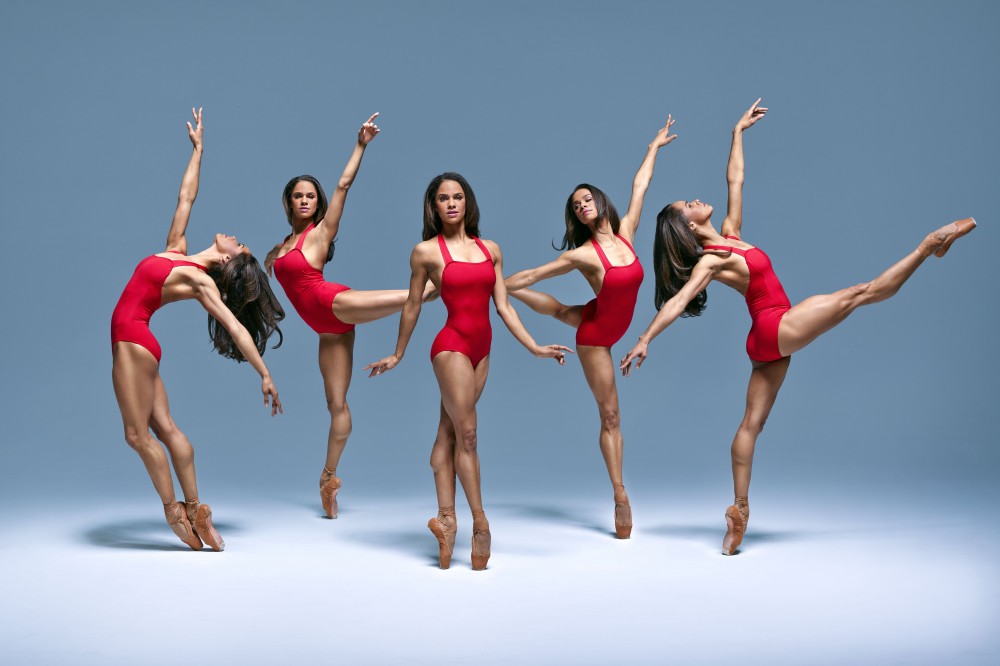In 2007, Misty Danielle Copeland became the first African-American ballerina to be a principal dancer with the American Ballet Theater (ABT) in twenty years. Since then, Misty Copeland has become a recognized icon for breaking down barriers in the art of dance. All her determination and resilience was built on the work of her mentor, Raven Wilkinson. Wilkinson was an African-American ballerina performing in the early days of the Civil Rights Movement. “She’s been through so much more than I could ever imagine, in the 1950s and experiencing racism in that time. It just felt like, ‘I can do this,'” Copeland expressed.1 Misty Copeland knew racism was not going to stop her from chasing her dreams.
As a young child, Misty Copeland expressed herself in the form of dance and instantly fell in love with the art. With her family’s hardship, dance was her escape and all her worries went away. Some of these worries included a lack of finances, a lack of comfortable living conditions, and a mother constantly changing boyfriends.2 Dance offered Copeland a way to relax and forget about all her problems. A prodigy by the age of thirteen, she surpassed the other dancers even with the many years they had ahead of her.
Once her training became more intense, Copeland began competing and receiving scholarships. At age fifteen, she was accepted with a full scholarship to the San Francisco Ballet’s Intensive Summer Program. In 2000, Copeland was also named the ABT’s Coca-Cola Scholar. After the program, the ABT invited Copeland to be part of their own studio company. She was the only African-American woman out of eighty dancers, an impressive feat since she was often challenged by her race and physique.3 “I had been told to pancake my skin a lighter color to fit in with the rest of the company,” she wrote.4 Nonetheless, she rose up with her extraordinary skill, and the lack of racial diversity came to the forefront, beginning to make waves in the ballet world.

Stephanie Webre challenged the status quo by casting two African Americans to play the leading roles in Swan Lake: Brooklyn Mack and Misty Copeland. Copeland and Mack were exquisite for their dancing. However, their performance was also admired for Webre’s ethnic inclusiveness, because dancers of color rarely get the chance for leading roles. According to Karen Sparks: “Many companies and schools endorse retrograde aesthetic values that place dancers of color at a disadvantage in the realms of hiring, castings, and promotions.”5 This discouraged African-American dancers from continuing on and studying ballet. For these reasons, there have been insufficient breaks for dancers of color.
After two decades, Misty Copeland became the first African-American soloist dancer to perform for ABT. Her story quickly made her a role model. “It made me feel really empowered not to let the negativity of racism even to this day affect me and my career. I can be strong and persevere and allow my talent to shine beyond the color of my skin,” she wrote.6 Misty Copeland became an advocate for “diversifying the field of ballet and creating access for dancers of varying racial and economic backgrounds.”5
Since receiving a leading role, Copeland has served on the advisory committee for the ABT’s Project Plié, which is a program “to increase racial and ethnic representation in ballet that offers guidance to dance instructors in diverse communities around the United States.”8 Project Plié’s objective is to discover the next “Misty Copeland” and invest in his or her training. The program is made up of a combination of corporations within the dance community to provide scholarships and many opportunities for dancers of color. Project Plié offers internships to encourage many dancers of various backgrounds to pursue their dreams of becoming professional ballerinas. In order to obtain a scholarship or internship, the student must attend many auditions and attract the attention of the advisory committee. Once selected, Project Plié interns are eligible to receive a scholarship to live during their time in New York City. The scholarship consists of roundtrip transportation, a metro card, and housing assistance. This organization could not be what it is today without Misty Copeland’s determination. She continues to advocate for dancers of color and dancers of unprivileged backgrounds to pursue their dreams of becoming a dancer. Today, several ballet companies have made progress in changing racial inequality in ballet. Just within the last decade, many companies have recruited dancers and have begun to change the complexion on the stage. Misty Danielle Copeland is breaking the racial barriers and paving the way for future ballerinas.9

- Encyclopedia Britannica, December 2014, s.v. “Misty Copeland,” by Naomi Blumberg. ↵
- Misty Copeland, Life in Motion: An Unlikely Ballerina (New York: Aladdin, 2014), 20. ↵
- Encyclopedia Britannica, December 2014, s.v. “Misty Copeland,” by Naomi Blumberg. ↵
- Misty Copeland, Life in Motion: An Unlikely Ballerina (New York: Aladdin 2014), 20. ↵
- Encyclopedia Britannica, June 2015, s.v. “Addressing Racial Diversity in Ballet,” by Karen Sparks. ↵
- Misty Copeland, Life in Motion: An Unlikely Ballerina (New York: Aladdin 2014), 127. ↵
- Encyclopedia Britannica, June 2015, s.v. “Addressing Racial Diversity in Ballet,” by Karen Sparks. ↵
- Encyclopedia Britannica, June 2015, s.v. “Addressing Racial Diversity in Ballet,” by Karen Sparks. ↵
- Rhonesha Byng, “Misty Copeland Inspires Project Plie, A Diversity Initiative Launched By ABT To Fine More Black Ballerinas,” Huffpost, September 2013, https://www.huffingtonpost.com/2013/09/19/misty-copeland-project-plie-_n_3950827.html. ↵



60 comments
Christopher King
I like how the article is short but it still keeps the reader hooked and well informed. I also like the use of the images. They seem to help reflect who Misty Copeland is and possibly her attitude. She faced not only hardship with her family not having enough money all the way to racial discrimination only because of the color of her skin being just about the sole purpose. It is unfortunate that anyone would still see that way but she broke past that barrier and rose to become an incredible dancer. This article does a great job showing a woman who has broken through those to experience of what her passoin lies in.
Irene Astran
I just read the other Misty Copeland article on this site and I am pleased to see that there was great diversity between the two. Upon first glance, I was weary that I would be reading the same article over again. This article gave me more insight into her adult life, while I believe the other article focused on her childhood struggles.
Cristina Cabello
Your pictures are really nice. They display a good image of Misty Copeland and how she performs. I like reading about people that make a change in the world. For Misty, she was the first African American woman to be a dancer in the Ballet Theatre. It must feel amazing to have that accomplishment. But it definitely was not easy for her. I admire all the hard work that she did to reach her goal.
Isaac Saenz
It is great to learn more about Misty Copeland, especially about what she is doing for other dancers and people of color. Misty uses her past experiences with racial inequality as a platform to speak up about the topic and continue to raise awareness about it. All of this in the form of a program that is shaped to find the next breakthrough ballet dancer that deserves a chance to shine.
Vanessa Tombo
Mary Copeland continues to inspire everyone who hears her story. Her passion for wanting to dance was her driving force and no restrictions could stop or break her spirits. She continues to revolutionize the face of ballet by bringing diversity and paving the way for all who aspire not only to become professional ballerinas like herself but, all who hear her story of endurance and passion.
Samire Adam
I love the use of pun in the title. What I learned from reading this article is that a strong work ethic will eventually pay off. Copeland’s commitment to her art despite the lack of representation in the ballet community led her to become the first person of color to be a principal dancer. Moreover, I admire her for continuous effort to change the narration of “what a ballerina supposed to look like” by providing opportunities to others to follow their dreams and hopefully inspire others.
Marlene Lozano
The title of this article caught my eye and made me want to read this article. By using her talent, she was able to break barriers socially. It is impressive that she was the first African-American soloist dancer to perform for ABT. It is inspiring that she did not let race stop her from doing what she was truly passionate about.
Erin Vento
I love learning about Misty Copeland’s life and all the success she’s found doing what she loves. This article is so very well written and emphasizes how she’s climbed her way to the top despite all she had to face, and that she’s found a way to help others break the glass ceiling along with her. It’s very inspiring and the photos you used are so beautiful!
Ximena Mondragon
This article reminds me of an article I just read about an African-American ballerina. Despite her challenges she was successful. This story is very powerful for all the young African-American ballerinas since they have someone they can look up to. I think ballet is such a beautiful dance style and its great to see how it is being more inclusive. Overall, the article is written very well.
Ana Gonzalez
I love the pictures the author used in the article! They definitely convey Misty Copeland as a graceful, successful dancer. The story of Misty is very inspiring since she overcame hardships at home by becoming highly involved in the art of dancing until she became the first African American women to be featured as a principal dancer in the American Ballet Theatre. This accomplishment should be remembered as she has paved the way for women of minorities to have the courage to reach for their dreams. Great article!